
Change is Good: Our New Co-op and Miso-Glazed Eggplant
I am loving our neighborhood co-op, the Alberta Co-operative Grocery. I admit to being stuck in the supermarket chain rut until its employees called for a boycott after two years of working without a contract, and we were forced to find an alternative. Fast.
The change, frankly, has been revelatory…while the store itself is much smaller, the co-op seems to have just about everything we normally shop for, the brands it carries favor local producers and the bulk of the goods—including the bulk goods—tend to be organic. The prices are much better than at the chains, too, and between our Stoneboat Farm CSA and the co-op, our grocery bill is noticeably reduced. It even has a senior day every Tuesday for 10 percent off your total bill.

I was checking out the other day (yes, a Tuesday) when the cashier asked me what I was going to make with the miso I had in my cart. Since I'm putting miso in just about everything these days, I rattled off a list of my favorites. She then began describing her latest favorite featuring miso, a miso-glazed roasted eggplant, and how much her up-till-then eggplant-hating husband had done a 180 on the vegetable after she made it for him.
I was sold.
After arriving home I sat down and looked up several recipes (some even in actual books) all with some similarities to the one my cashier friend had described, but none was exactly the same, so I was left to wing it. While my guys are not eggplant averse—Who could dislike the cheesy goodness that is this Eggplant Parmesan?—they flipped out over the version of roasted Japanese eggplant in the recipe below.
I'll keep working on it to see how it holds up with different sizes of the fruit, but I'd recomment sticking with smaller-sized fruits or, better yet, the long Japanese varieties.
Miso-Glazed Eggplant
For the eggplant:
6 Japanese (long) eggplants, approx. 3-4 oz. each
2 Tbsp. toasted sesame oil
For the glaze:
4 Tbsp. miso (white or red)
1-2 Tbsp. sugar or honey, depending on how sweet you want it
2 Tbsp. mirin or dry white wine
1 Tbsp. fish sauce
1 large clove garlic, pressed or finely minced
Toasted sesame seeds (optional)
Slivered green onions (optional)
Preheat oven to 450°.
Slice off the stems of the eggplants and remove any remaining bits of the cap. Slice eggplants in half lengthwise and, with a paring knife, score the cut side of the eggplants in a crosshatch pattern about 1/8” deep. Brush with toasted sesame oil. Place cut-side down on a parchment-lined baking sheet and roast in the oven for 10 minutes.
While the eggplant is roasting, put all the ingredients for the glaze in a small mixing bowl and combine well.
Remove the eggplant from the oven and turn up the temperature to 500°.
Carefully turn over the halves so cut side is facing up. Brush with miso glaze and place back in oven for 5 min. Turn up the oven to broil and place the pan 8-10” from the element. Broil until glaze bubbles and begins to char slightly, 5-7 min. Remove and serve sprinkled with toasted sesame seeds and chopped cilantro or green onions.


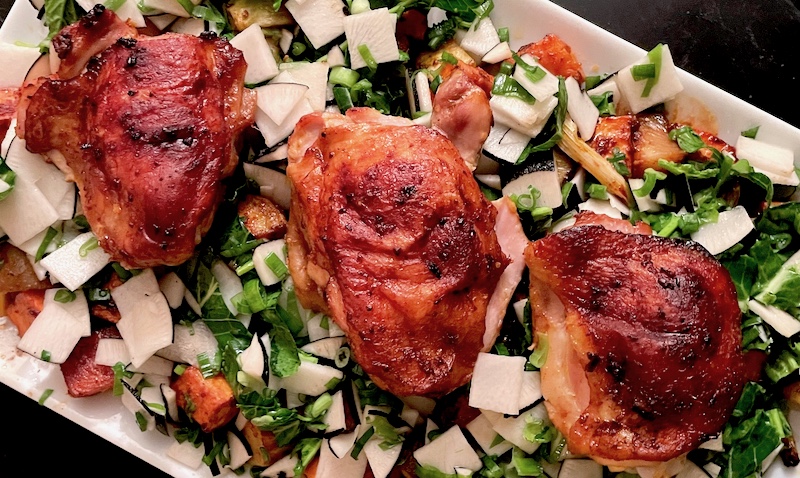
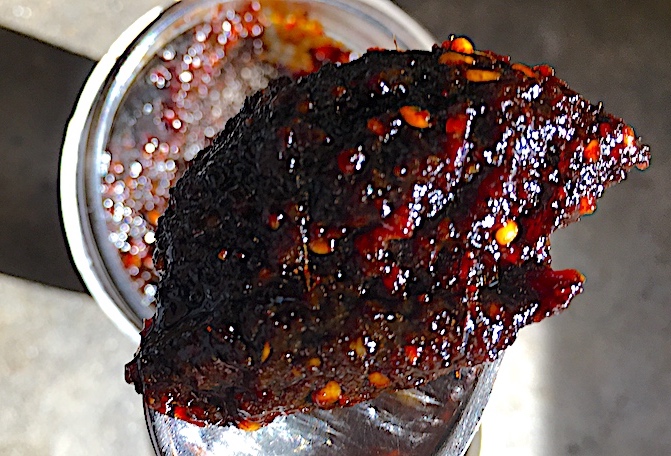

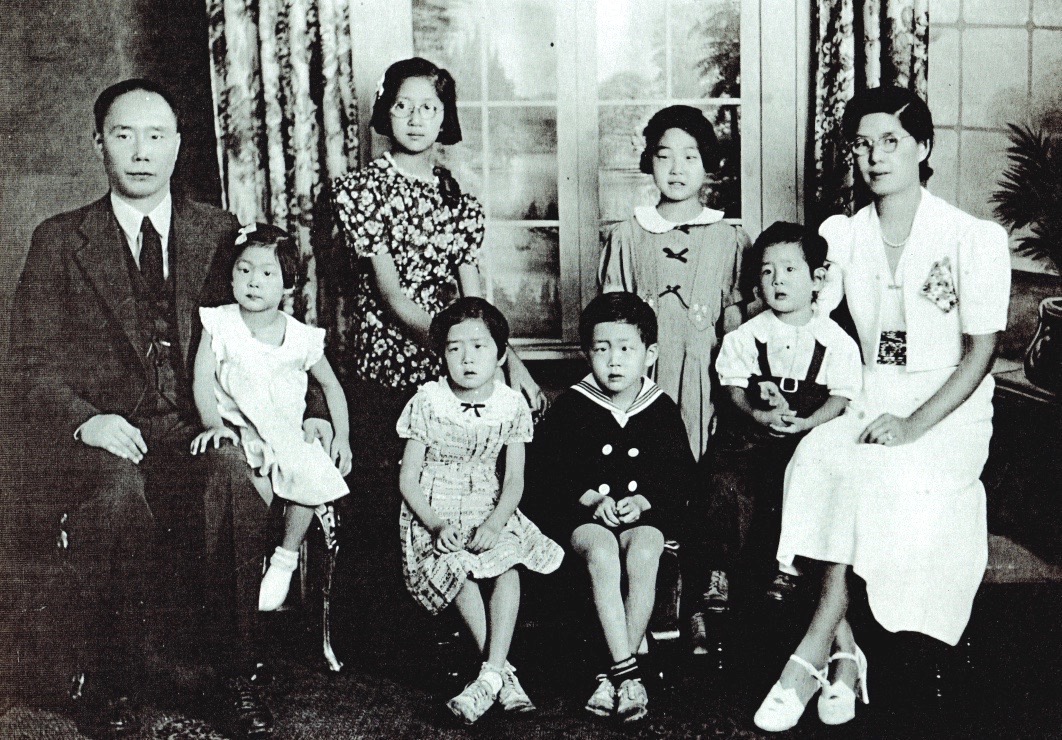
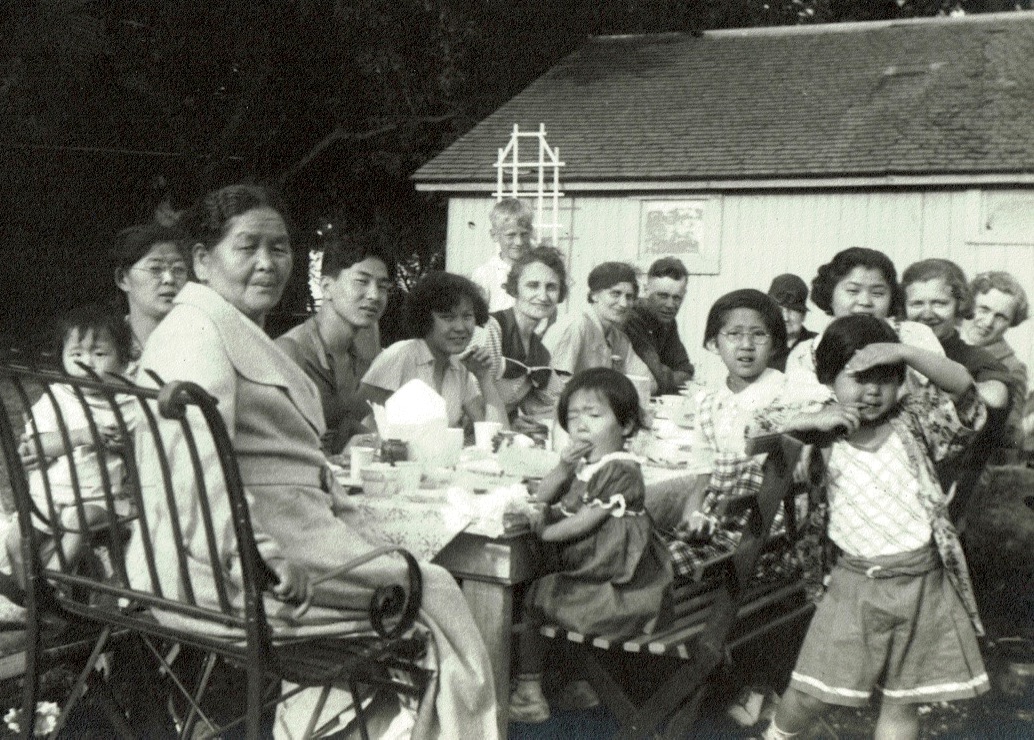

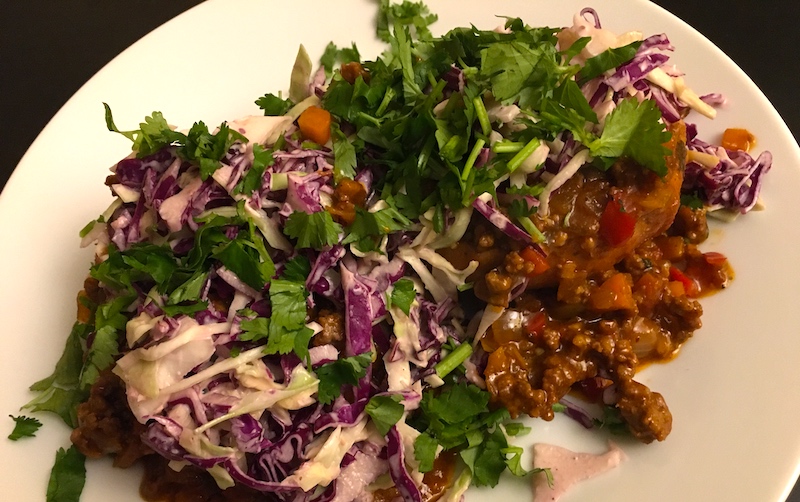

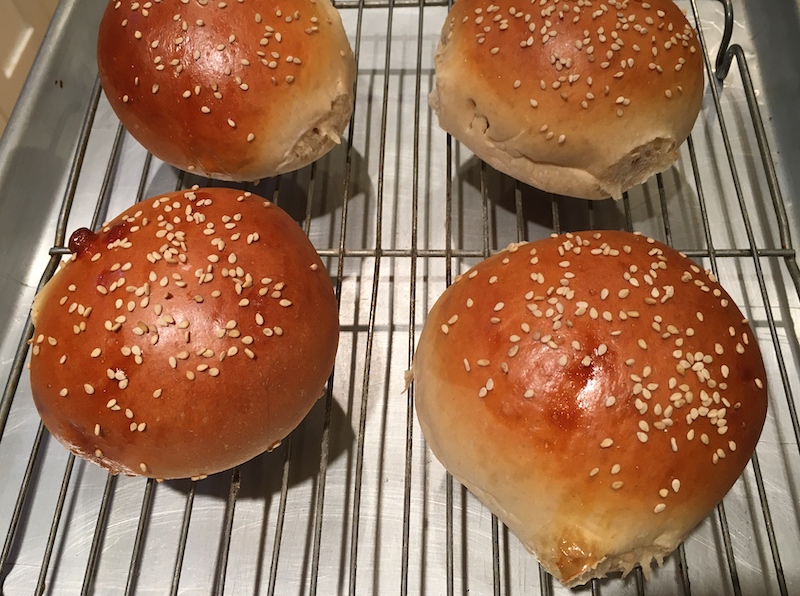
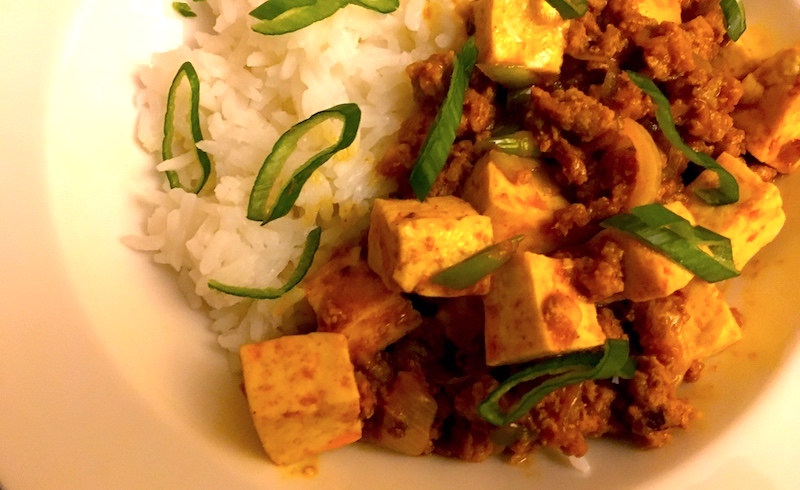
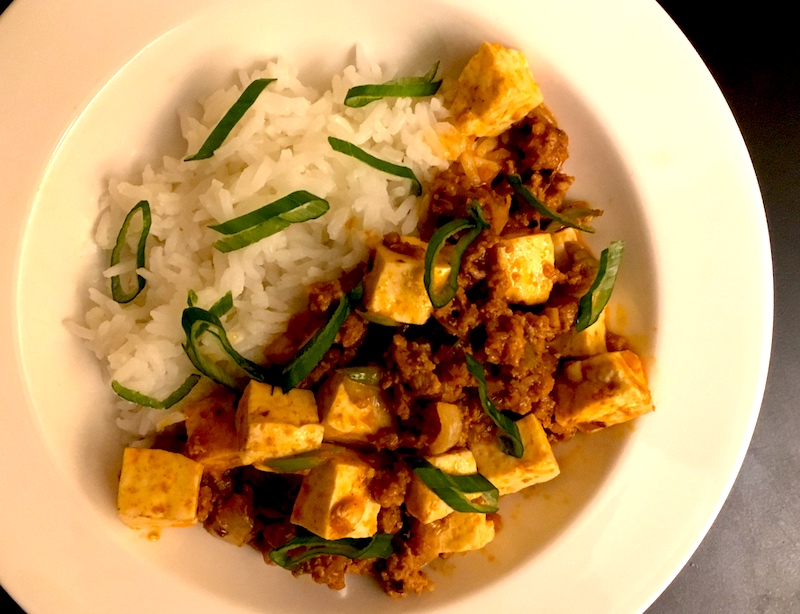 Personally, my cranky quotient has been off the charts lately. (Just ask Dave.)
Personally, my cranky quotient has been off the charts lately. (Just ask Dave.)
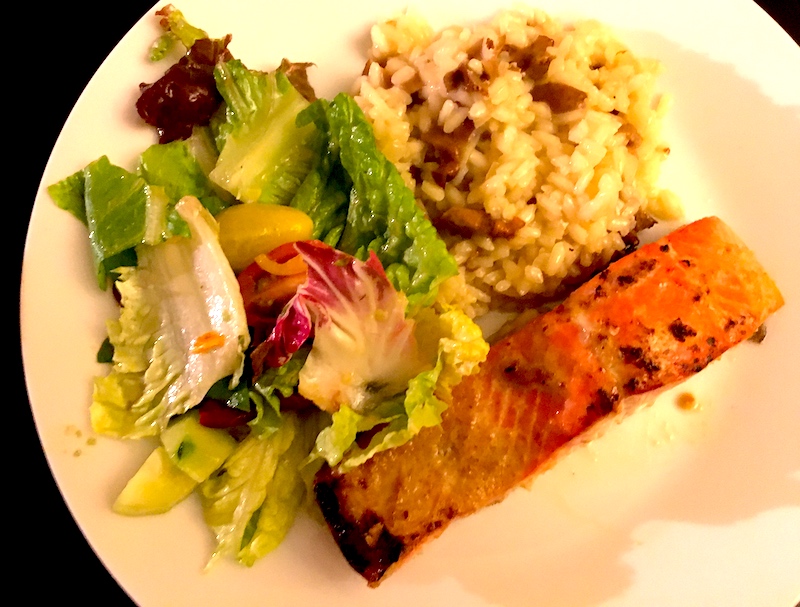 So now's the time to go to the freezer and haul out one of those sides of salmon
So now's the time to go to the freezer and haul out one of those sides of salmon 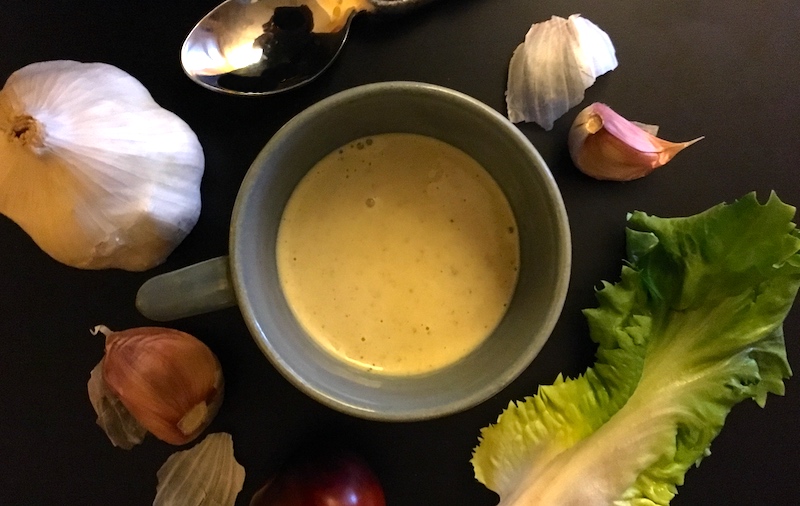
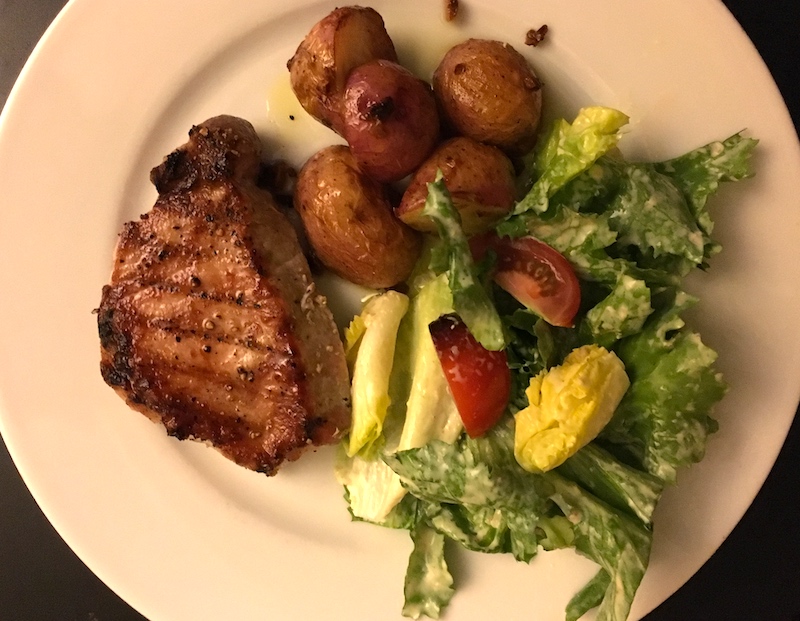 So when I've got some sturdy heads of romaine, escarole or chicories that can stand up to heftier dressings, my thoughts turn to Caesar dressings loaded with anchovy or, lately, miso mixed with mayonnaise (hey Mom!), studded with garlic and a dollop of mustard.
So when I've got some sturdy heads of romaine, escarole or chicories that can stand up to heftier dressings, my thoughts turn to Caesar dressings loaded with anchovy or, lately, miso mixed with mayonnaise (hey Mom!), studded with garlic and a dollop of mustard.